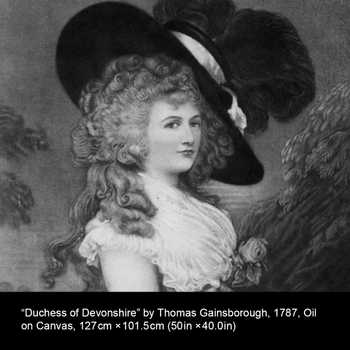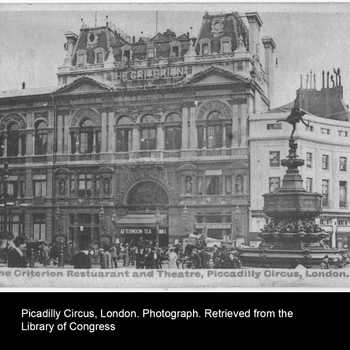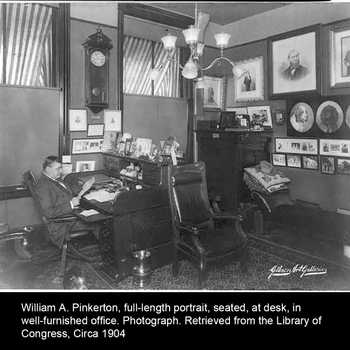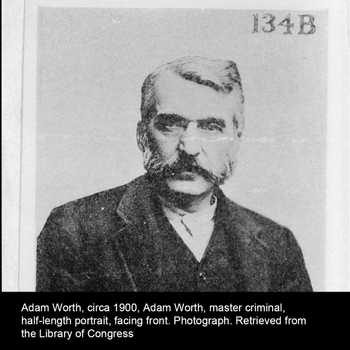On May 6, 1876, the "Duchess of Devonshire" by Thomas Gainsborough caused an uproar at Christie’s, fetching the highest price ever paid for a painting at auction, an astronomical £10,500, or about $50,000 US. It was snatched up by the savvy London art dealer William Agnew. The painting barely had time to hang in Agnew’s second-story gallery when it was stolen in a flawless heist three weeks later.
Under the cloak of night, a thief slipped into the gallery through a window, expertly slicing the canvas from its frame, leaving behind a telltale triangular piece—perhaps a clever ploy to identify the painting for future negotiations with Agnew.

At the time the painting vanished, William Pinkerton from Pinkerton’s Chicago headquarters was in London, working alongside Scotland Yard and Superintendent John Shore in their investigations of American expatriate thieves—something he frequently did. He shared his suspicion with Shore. He believed theft could be committed by none other than Adam Worth, an American bank and jewel thief known to be in the city. Pinkerton and his team had been in pursuit of Worth or his many aliases since the Civil War in the 1860s for various crimes. Worth always seemed to be just one step ahead of them, disappearing without a trace. Pinkerton considered Worth to be "the most remarkable criminal of them all” because of his ingenuity, aptitude to recognize arte d'clasique, and aversion to violence in any form.
Shore and Scotland Yard were well aware of Worth, or rather, they were aware of Henry Judson Raymond. Raymond’s Picadilly Circus flat was a rendezvous for noted crooks from all over the world, especially Americans, and at the center of it was Raymond, who would orchestrate and contract out crime. He was dogged by Scotland Yard, who never could produce enough evidence to convict Worth.
In the mid-1880s, Pinkerton was back in London on one of his frequent trips to collaborate with Scotland Yard, and late one afternoon, he and Shore dropped in for drinks at the chic Criterion Bar, not far from Picadilly Circus. Pinkerton spotted Adam Worth, aka Raymond — and waved him over for a drink.

This was not the first time Pinkerton and Worth met in a bar. The first time was at the American Bar in Paris in 1873. Adam Worth and one of his accomplices, with the remnants from their Boylston National Bank heist in Cambridge, Massachusetts, purchased the building, and turned it into the American Bar, a lavish three-floor establishment where the who’s who of the criminal world would seek R&R, where clandestine conversations and plans were murmured, and where both legal and illegal entertainment could be found.
When Pinkerton walked into his establishment, Worth recognized the formidable detective immediately, noting the way the room tensed as Pinkerton's square jaw and piercing gaze swept over the crowd. His mere presence was a reminder that the reach of the law was long and unyielding.
That evening, Worth — er, rather Raymond — was a gracious host. He offered a drink to the detective as they engaged in a dance of wits, exchanging banter peppered with unspoken thoughts. They spoke of Paris, of mutual acquaintances, but beneath the casual conversation lay a battle of minds. Pinkerton, ever “The Eye,” and Worth, ever on the alert, measured each other, with Pinkerton perhaps taking a silent delight in the subtle game.
It was only after the detective departed that Worth relaxed, contemplating the true purpose of Pinkerton's visit. Was it a simple reminder of Pinkerton’s ever-watchful eye, or a more pointed warning? The other rapscallions in the room could only speculate, but to Worth one thing was clear: Pinkerton was well aware of Worth's checkered past, from his Civil War bounty collecting and desertion to his criminal exploits and possibly even his involvement in the Boylston National Bank heist and deceptions in Liverpool. (Pinkerton had ‘woods – criminal informants – all over the world who loved to rat on their miscreant brethren if it kept the heat off of them). The encounter at the American Bar was a silent proclamation—a declaration that the Pinkertons were on to him, and that his every move was being monitored.
This exchange set the stage for the encounter at the Criterion Bar in London in the 1880s. It was like a scene straight out of a detective novel: John Shore, the superintendent of Scotland Yard’s criminal investigation division; the illustrious William Pinkerton of Pinkerton’s National Detective Agency; and Adam Worth, a crafty and cultured master thief at the center of Europe’s criminal enterprise, treating one another to drinks in a show of good sportsmanship.

It is said that Pinkerton and Worth exchanged greetings with the familiarity of long-time acquaintances, their conversation laced with playful sarcasm, unlike their earlier conversations. Pinkerton deliberately overemphasized "Mister Raymond," a wink to signal he knew Worth’s true identity. Worth, in turn, made light-hearted remarks about the ineffective efforts of law enforcement to apprehend him.
Their encounter ended with a handshake, marking mutual recognition of each other's skills in their adversarial roles. Yet, as their encounter drew to a close, Worth offered a surprising compliment. "Sir," he said, "I think Inspector Shore is a bumbling idiot — but as for you — well, I have great respect for you and your people. I want you to know that." (Geringer, ch. 7)
In a meticulously drafted report years later, Pinkerton detailed the litany of crimes in the 1870s and 80s that seemed to bear the hallmark of Adam Worth's elusive touch — bank robbery, check forgery, swindling, larceny, safe cracking, and the glittering temptation of diamond theft — though proof remained as elusive as the man himself until he was finally caught and tried in Belgium in 1892. As a show of respect for Worth, Pinkerton remained silent and ignored the requests from the Belgian Court to provide information that would have sent Worth away for life. Instead, Worth served a few years, was released early from his seven-year sentence for good behavior in 1897.
Pinkerton would not see Worth until January 1899. Worth contacted Pinkerton by letter, “Presuming upon our friendship in London…I have come to see you about a matter that might be to our mutual benefit in the event of your entertaining it.”
Worth further explained:
“I have sufficient knowledge of and confidence in your character, to know that if I have your word that no advantage will be taken of my position, and that no use will ever be made of any information you may acquire in regard to the matter upon which I wish to consult you. I can safely rely upon it…I am further encouraged to come to you owing to your great kindness and forbearance in 1892. In the matter of those letters of inquiry from abroad; you will remember the circumstance, and for which I am under great obligation to you and truly grateful."
Pinkerton arranged for Worth to meet him in his office, and the two spent the night talking as old friends do. It was then that he asked Pinkerton for help to broker the return of the “Duchess” in exchange for a ransom and immunity from prosecution.

It took months of negotiating, and in March 1901, the Duchess of Devonshire was returned to Agnew. Less than a year later, Adam Worth passed away due to complications of an illness he caught in the Belgian prison. He was 58 years old.
While adversaries — and unlikely, dare we say, friends — Pinkerton's immediate concern was the welfare of Worth's children. Pinkerton sent a check for $700 to Harry and Constance, telling them that he had recently apprehended someone who owed their father from a past business deal. Pinkerton also secured a job for Harry that paid significantly better than the meager $4 a week he earned at his foundry job.
Integrity, vigilance, and excellence.
SOURCES
Geringer, Joseph. "Adam Worth: The World in his Pocket — Unlike a Hero." Crime Library, www.crimelibrary.com/criminal_mind/scams/adam_worth/1.html. Accessed 25 Apr. 2025.
Williams, David R. Call in Pinkerton's: American Detectives at Work for Canada. Dundurn Press, 1998. [Accessed: https://archive.org/details/callinpinkertons0000will]
Pinkerton criminal cases: "Napoleon of Crime" Adam Worth, essays on exploits. (1907). Pinkerton's national detective agency, part B: Criminal case file, 1867-1961; series 4: O-Y () Retrieved from https://www.proquest.com/archival-materials/pinkerton-criminal-cases-napoleon-crime-adam/docview/3053231876/se-2
Pinkerton criminal cases: Recovery of the Duchess of Devonshire, a painting by Thomas Gainsborough. (1897). Pinkerton's national detective agency, part B: Criminal case file, 1867-1961; series 2: D-J () Retrieved from https://www.proquest.com/archival-materials/pinkerton-criminal-cases-recovery-duchess/docview/3053192462/se-2
Taylor, Rupert. "The Napoleon of Crime: Adam Worth." HubPages, 25 Mar. 2025, hubpages.com/The-Napoleon-of-Crime-Adam-Worth. Accessed 28 Apr. 2025.





